Discovering what truely is inside Jupiter
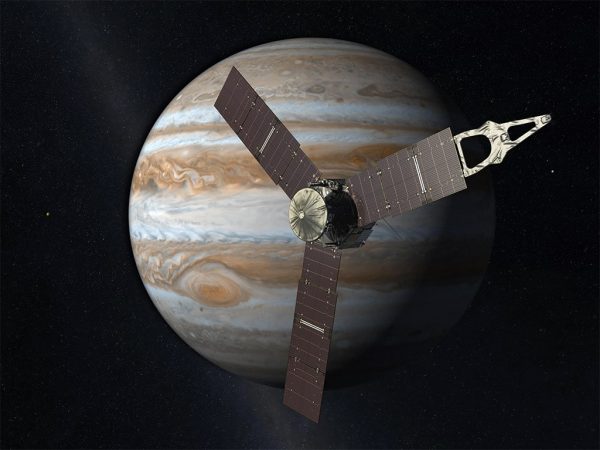
For the first time in just over 13 years, the king of the planets will once again have a spacecraft completely dedicated to probing its secrets. Called Juno after the roman goddess who was the wife of Jupiter (The Roman version of Zeus) this spacecraft will be the first to operate past the asteroid belt and be powered by solar panels and not a Radioisotope Thermoelectric Generator (RTG). Up until now, solar panel technology wasn’t able to power spacecraft this far out due to the weakness of the sunlight as such a distance. But the lack of Plutonium 238 which is needed for a spacecraft’s RTG has spurred NASA to create some of the most efficient solar panels ever made.
The spacecraft was launched from Cape Canaveral on the 5th of August 2011 on an Atlas V rocket and after two flybys of The Earth to gain the required speed to get to Jupiter, it is due to arrive on the 4th of July 2016 US EST (American Independence Day).
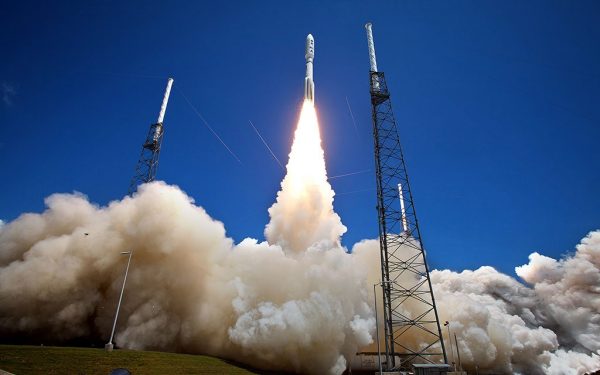
Around midday of July 5th (AWST), Juno will fire its main engine for the 35-minute insertion burn to insert itself into a polar orbit around the gas giant. This approach over the north pole of Jupiter is unlike any of the previous spacecraft to visit Jupiter which all approached from much lower latitudes nearer to the equatorial zone, and thus provide a perspective like none other. Preparations have been in full swing by the science and engineering teams which have been in contact with the Juno spacecraft 24/7 since June 11th. They’ve already uplinked the rocket firing parameters for the critical insertion and the protective cover that shields the main engine from micrometeorites has been opened since June 20th. All instruments except those critical for the burn were turned off on the June 29th. That includes turning off Junocam.
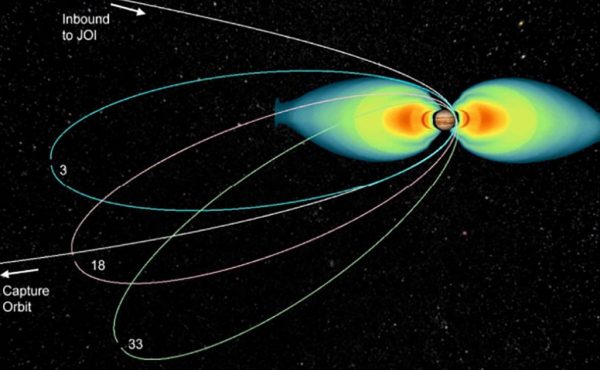
During orbital insertion, Juno will fly within 4,667 km’s (2,900 miles) of the Jovian cloud tops and any signals from the spacecraft will take an hour to reach Earth even traveling at the speed of light due to Jupiter’s distance from Earth. This means the NASA will know 10 minutes after the burn whether or not it was successful.
Juno is part of NASA’s New Frontiers mission’s which aimed to send spacecraft to research planets including Jupiter, Venus, and the dwarf planet Pluto. Scott Bolton the current Director of the Space Science & Engineering Division at the Southwest Research Institute is the principal investigator for the Juno mission and is responsible for all aspects of the mission. Bolton previously served on NASA’s Galileo mission as a member of the plasma spectrometer team and plasma wave instrument team, so he’s very familiar with spacecraft working at Jupiter.
Lockheed Martin was responsible for the development and construction of Juno while The Jet Propulsion Laboratory is managing the mission while in space. The mission is being carried out with the participation of several universities, with co-investigators including Toby Owen of the University of Hawaii, Andrew Ingersoll of California Institute of Technology, Fran Bagenal of the University of Colorado at Boulder, Candy Hansen of the Planetary Science Institute, and Jack Connerney of the Goddard Space Flight Center serving as instrument lead.
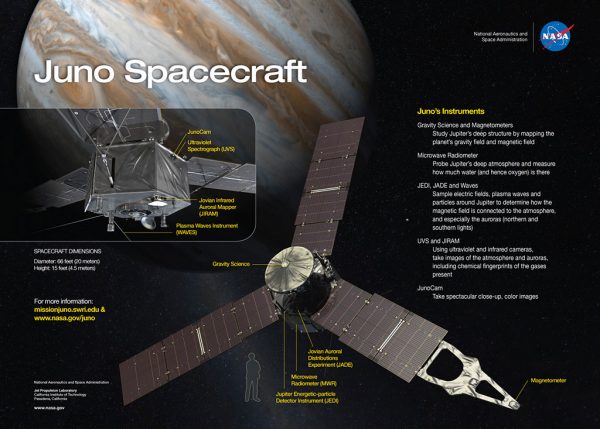
Juno has 29 sensors and 9 onboard instruments that will perform experiments to search for clues about how Jupiter formed, including whether it has a rocky core, measure the thermal radiation emanating from deep within Jupiter’s atmosphere, gather data about its gravitational field and polar magnetosphere, finally find out the amount of water present within its deep atmosphere, find out how its mass is distributed, as well as record data on the planets deep winds.
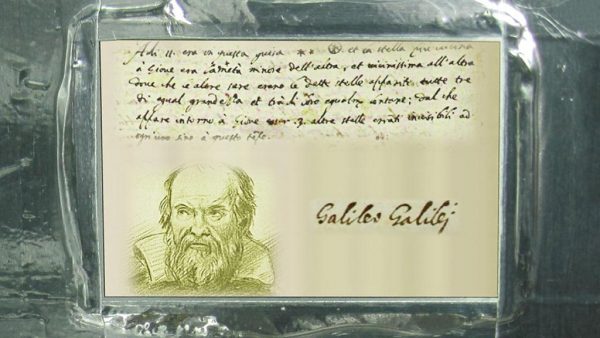
To perform these experiments, Juno will orbit Jupiter 37 times over a period of 20 months in a polar orbit which means it’ll orbit 90 degrees to Jupiter’s equator going over the north and south poles of Jupiter with the closest orbit being just 5000km’s above Jupiter atmosphere. After completing its 20-month mission NASA will de-orbit Juno to burn it up in Jupiter’s outer atmosphere so they can avoid any possibility of contaminating one of the four Galilean moons.
Finally, to pay tribute to Galileo Galilei the first man to point a telescope at the night sky and Jupiter, Juno is carrying a plaque dedicated to the man that was provided by the Italian Space Agency. The plaque contains a portrait of Galileo and the text in Galileo’s own hand, penned back in 1610 while observing Jupiter’s four main moons. This text translates as:
On the 11th it was in this formation, and the star closest to Jupiter was half the size than the other and very close to the other so that during the previous nights all of the three observed stars looked of the same dimension and among them equally afar; so that it is evident that around Jupiter there are three moving stars invisible till this time to everyone.
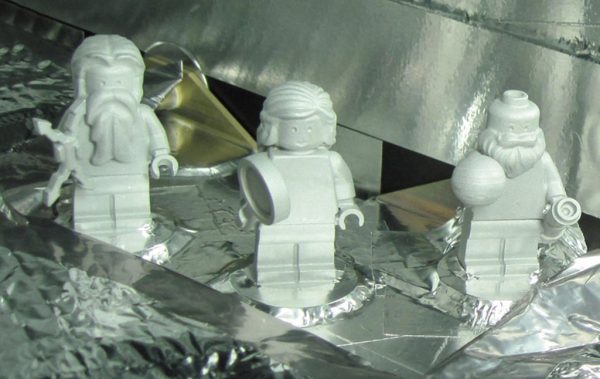
The spacecraft also carries three Lego figurines representing Galileo, the Roman god Jupiter and his wife Juno. They’re made from aluminium so they’ll have a better chance to endure the extreme conditions of space flight.
NASA is already making plans for public outreach with the Juno’s JunoCam (http://bit.ly/29cfsD5). An on-board imaging instrument, NASA will call on the public to serve as a virtual imaging team. It’ll do this by asking the public to make decisions on which regions of the gas giant the camera will target via a voting system that will be on the Juno mission website.
The website will offer a forum for discussion and it’ll also allow amateur astronomers to upload their own images to share with others. This is shaping up to be one hell of a mission, which will answer a lot of our questions regarding how Jupiter came to be and how it shaped our Solar System.
You can watch online by visiting (All times are in AWST):
Tuesday, July 5th at 10:30am — Orbit Insertion Day
Live coverage on orbit insertion day also will be available online via Facebook Live at:
See which of NASA’s Deep Space Network sites is received Juno’s signal:





